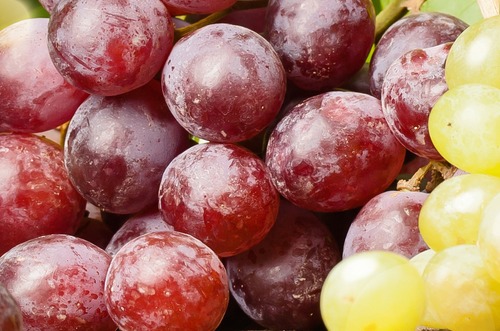Australian Table Grapes Set to Recover in the Chinese Market

The significant decline in MY 2020/21 was mainly due to a reduction of around 20K mt of exports to China, representing 62% of Australia’s overall export reduction. However, according to USDA estimates, exports for MY 2021/22 are forecast at 130K mt, an 8% increase from the downward production in the previous MY. The increased forecast production of 10K mt in exports is primarily related to the forecasted increase in production of 5% YoY.
Another major contributing factor for the MY 2020/21 decrease in exports is the increased logistics challenges and costs associated with sea freight. According to USDA data, 97% of the Australian table grape exports are shipped by sea freight, while the remaining small volume of exports by air freight is predominantly for early-season grapes to premium markets.
Production Volume Starts to Recover
One of the key factors for a much better sales outlook in MY 2021/2022 is the estimated 5% increase in production. According to the USDA, Australia’s table grape production is forecast to rise to 210K mt, which would be a 10K mt increase from the previous MY. This increase would mean a recovery towards higher production potential, which has been hampered by a continued shortage of labor availability that significantly impacted MY 2020/21 production.
According to Laura Davies, Tridge’s Engagement Manager in Australia, although there are currently several varieties grown in Australia, production for the fresh market is dominated by two main green varieties and three red varieties. “Menindee and Thompson are the two most common green varieties that account for 38% of the fresh grape production. Crimson, Flame, and Globe are the main red varieties that account for 30% of the total production”, she explained.
Production of these varieties in Australia, mainly in the Victoria state, seems to have recovered significantly from labor shortages since the COVID-19 pandemic. According to the USDA, grape farmers in Australia have effectively planned the new MY 2021/2022 harvest by decreasing input costs, reducing fertilizer inputs, bunch thinning, and scaling back pest and disease protection measures to optimize their returns. Additionally, with the Australian border now open for foreigners, new seasonal agricultural visas will be granted for international workers for the fields.
Australia’s Competitive Advantage on the Chinese Market
China’s overall imports of table grapes in MY 2020/21 dropped by 46K mt, a 19% decrease YoY. Imports from their main supplier, Chile, fell by 29%, while imports from Australia fell by 22%. However, imports from Peru, the third-largest supplier to China, remained steady and matched the same volume of exports as Australia’s in 2020/21, taking advantage of the supply gap left in the market by the other suppliers. The shipping container shortage and elevated inspection processes at Chinese ports significantly impacted the export capacity to China from all suppliers.
For MY 2021/22, grape suppliers to China will still face the same shipping-logistical challenges as the previous MY. Moreover, sea freight costs are expected to be higher as shipping containers remain short and in high demand. On the other hand, China is expected to increase its table grape imports from the previous year as demand for table grapes has increased and inspection processes have become less strict. This will give Australian grapes a critical advantage over its South American competitors, particularly Chile and Peru, with a much shorter distance to reaching the market.
According to Alice Zheng, Tridge’s Engagement Manager in China, Australian green grapes sell well in the Guangzhou wholesale market. Since the beginning of March, shipments have started arriving from Australia with Sweet Globe and Thompson varieties, which have been high in demand. Due to the decrease in imports of Australian grapes over the last year, there is increasing consumer demand for Australian varieties. She reported that the first Australian shipment was sold out at a competitive price of USD 4.5/kg.
With a competitive logistical advantage of a much shorter shipping time and lower shipping costs than its competitors, Australian table grape exports are expected to increase their shipping volume to China and significantly recover its Chinese market share.





